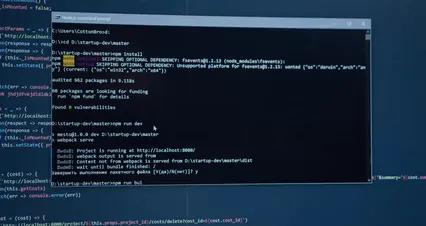Introduction
Statistical inference plays a pivotal role in data analysis and research. It allows researchers to draw conclusions about populations based on sample data. Think of it as a crystal ball for statisticians—helping them make educated guesses about the unknown using the known. From predicting medical outcomes to assessing the effectiveness of marketing strategies, the power of statistical inference is undeniable.
This article aims to provide a comprehensive review of the book “Statistical Inference” by George Casella and Roger L. Berger. This book is a cornerstone for anyone wanting to grasp the nuances of statistical reasoning. We’ll explore its contents, real-life applications, and how you can access the PDF version. Spoiler alert: it’s not just for the mathletes among us!
Who stands to benefit from this article? Students embarking on their statistical journey, seasoned researchers seeking a refresher, and analysts hungry for deeper insights will all find value here. If you’ve ever felt lost in a sea of data, this guide is your lifeboat!

Speaking of data, if you’re looking to enhance your analytical skills, consider diving into Statistical Methods for the Social Sciences by Alan Agresti. This book is a fantastic resource for anyone looking to apply statistical techniques to real-world problems.
Understanding Statistical Inference
Definition and Importance
So, what exactly is statistical inference? In simple terms, it refers to the process of using data from a sample to make estimates about a larger population. Imagine you’re at a pizza party. You taste one slice and declare the pizza delicious for everyone. That’s statistical inference at work—relying on a small sample to judge the entire pie!
The importance of statistical inference cannot be overstated. It’s the backbone of decision-making in various fields. Healthcare professionals use it to determine the efficacy of new treatments. Economists rely on it to analyze market trends and make predictions. In essence, statistical inference helps us make sense of the chaos around us.

For those diving deeper into statistics, I highly recommend The Art of Statistics: Learning from Data by David Spiegelhalter. This book breaks down complex statistical concepts in a way that’s easy to digest, making it perfect for beginners and seasoned pros alike!
Applications of Statistical Inference
Statistical inference is everywhere! In healthcare, it guides clinical trials, allowing researchers to assess whether a new drug is effective. Economists utilize it to forecast economic conditions based on sample surveys. Even sports analysts employ statistical inference to evaluate player performance and team strategy.
But it doesn’t stop there. In environmental science, it aids in understanding climate change impacts through sample data from various regions. In business, companies analyze customer data to improve products and tailor marketing strategies. The versatility of statistical inference showcases its significance across disciplines. Whether you’re analyzing data for fun or professional purposes, understanding statistical inference is crucial for making informed decisions.

Speaking of data, if you want to get hands-on with data analysis, consider picking up Python for Data Analysis by Wes McKinney. This book is perfect for those looking to utilize Python in statistical analysis and data visualization.
In summary, statistical inference is a key player in the game of data analysis. It empowers researchers, analysts, and decision-makers to draw meaningful conclusions from limited data. The next time you hear about a study’s findings, remember that behind those numbers lies the magic of statistical inference!
Key Concepts in Statistical Inference
Parameters and Statistics
In the realm of statistics, understanding the distinction between population parameters and sample statistics is crucial. Population parameters are the characteristics of a complete group, like the average height of all adult men in a country. Sample statistics, however, are derived from a subset of that group. For example, if you survey 100 men, their average height is a sample statistic. The key takeaway? Sample statistics help us estimate population parameters without needing to survey everyone. It’s like guessing the number of jellybeans in a jar by counting a handful!

Estimation
Estimation is the art of making educated guesses. We categorize it into two types: point estimation and interval estimation. Point estimation provides a single value as an estimate of an unknown parameter. Imagine you’re trying to guess your friend’s age; you might say, “I think she’s 30.” That’s point estimation. On the flip side, interval estimation gives a range of values. You might say, “I believe she’s between 28 and 32.” This method adds a layer of confidence, acknowledging that while you’re close, you’re not spot-on.
If you’re curious about the statistical world, you might enjoy Naked Statistics: Stripping the Dread from the Data by Charles Wheelan. It’s a witty and engaging introduction to statistics that will have you laughing while you learn!
Hypothesis Testing
Hypothesis testing is the grand finale of statistical inference. It involves two competing statements: the null hypothesis (H0) and the alternative hypothesis (H1). The null hypothesis typically suggests no effect or no difference, while the alternative proposes a change or difference. For instance, you might hypothesize that a new teaching method improves student performance. The significance level, often set at 0.05, indicates the probability of rejecting the null hypothesis when it’s actually true. P-values help determine the strength of your results. A low p-value (usually less than 0.05) suggests strong evidence against the null hypothesis. Think of it as finding a treasure map; the lower the p-value, the closer you are to the treasure!
Understanding hypothesis testing is essential for anyone diving into statistical analysis. You can find a detailed overview in the statistics hypothesis testing cheat sheet.
Understanding these key concepts lays a solid foundation for statistical inference. By differentiating between parameters, mastering estimation techniques, and grasping the nuances of hypothesis testing, you’ll be well-equipped to tackle data analysis challenges. And who knows? You might just impress your friends with your newfound statistical prowess!
Key Insights from the Book
Fundamental Concepts
Probability Theory
Probability theory is the bedrock of statistical inference. It dives into the fundamental principles that help statisticians quantify uncertainty. At its core, probability answers a simple question: what are the chances of an event occurring?
Let’s break it down. The basic concepts include outcomes, events, and sample spaces. An outcome is a single possible result, while an event is a collection of outcomes. The sample space encompasses all possible outcomes. Think of it like a bag of jellybeans—each jellybean represents an outcome, and the bag itself is the sample space.
Understanding these concepts is vital. Probability theory allows statisticians to make predictions based on observed data. For instance, if we know that 60% of jellybeans in our bag are red, it’s reasonable to infer that a randomly selected jellybean will likely be red. This principle extends to complex scenarios, enabling researchers to make sound decisions based on incomplete information.

In statistical inference, probability serves as a guide to understanding variability. It lays the groundwork for more advanced topics, such as estimation and hypothesis testing. By grasping the basics of probability, readers can navigate the intricate landscape of statistical inference with confidence.
Point and Interval Estimation
Estimation is where the magic happens in statistical inference. It allows us to make educated guesses about unknown parameters based on sample data. The two main types of estimation are point estimation and interval estimation.
Point estimation provides a single value as an estimate of the unknown parameter. For example, if you survey 100 people to determine the average number of hours they sleep, you might find that the average is 7 hours. This single value is a point estimate. Simple, right?
Now, let’s jazz it up with interval estimation. This method offers a range within which the parameter is likely to fall. Using our sleep example, instead of just stating the average is 7 hours, you might say it’s between 6.5 and 7.5 hours with 95% confidence. This approach accounts for variability and uncertainty, giving a clearer picture.

Various techniques help us achieve these estimates. For point estimation, methods like the sample mean or maximum likelihood estimation come into play. Interval estimation often employs confidence intervals, which rely on the standard error of the estimate.
If you’re interested in a hands-on approach to statistics, you might want to explore Practical Statistics for Data Scientists by Peter Bruce. This book offers practical techniques and best practices for working with data!
These estimation techniques are essential for researchers, providing a framework for making informed decisions based on limited data. Whether you’re analyzing survey results or conducting experiments, understanding point and interval estimation is crucial for drawing meaningful conclusions.
Hypothesis Testing
Understanding the Testing Process
Hypothesis testing is the grand finale of statistical inference. It’s like a courtroom drama where two opposing sides—the null hypothesis (H0) and the alternative hypothesis (H1)—battle it out. The null hypothesis typically asserts that there’s no effect or difference, while the alternative proposes that there is.
So, how does this testing process unfold? First, you formulate your hypotheses. For example, you might want to test whether a new teaching method improves student performance. Your null hypothesis could state that it doesn’t improve performance, while the alternative would claim that it does.
Next, select the appropriate statistical test. The choice of test depends on your data type and the hypotheses you’re testing. Common tests include t-tests, chi-square tests, and ANOVA. Each has its own set of assumptions and applications, making it essential to choose wisely.
Once you’ve conducted the test, it’s time to interpret the results. Here’s where p-values come into play. A p-value indicates the probability of observing your data (or something more extreme) if the null hypothesis is true. A low p-value—typically below 0.05—suggests strong evidence against the null hypothesis, leading you to reject it in favor of the alternative.

If you’re looking for a practical guide to understanding hypothesis testing, consider checking out Statistics for Dummies by Deborah J. Rumsey. This book simplifies complex concepts, making them accessible for everyone!
In short, hypothesis testing equips researchers with a systematic approach to making inferences about populations based on sample data. It’s an invaluable tool for decision-making, allowing statisticians to draw meaningful conclusions from their analyses. With a solid grasp of this process, readers can confidently tackle real-world data challenges.
Understanding these key insights from “Statistical Inference” by Casella and Berger sets the stage for mastering statistical reasoning. From foundational concepts in probability to the intricacies of hypothesis testing, the knowledge gained here empowers readers to navigate the world of statistics with ease and expertise.
How to Access “Statistical Inference Casella PDF”
Download Options
If you’re eager to get your hands on the “Statistical Inference” PDF by Casella and Berger, you have several options. Various platforms host this valuable resource, making it easy for you to find.
1. Academia.edu: This site provides a user-friendly platform for downloading academic papers and books. You can find the PDF here. After creating an account, you can download or preview the book. Note that some features may require a login.
2. Scribd: This subscription-based service offers access to thousands of books, including “Statistical Inference.” You can start a free trial to access the PDF. Check it out here.
3. Dokumen.pub: Another great option, this site provides various formats for the book, including a detailed description. You can explore the PDF version here.
4. Ready For AI: This site offers the 2nd edition PDF for download. You can find it here. The file size is manageable at about 13.69 MB, making it accessible for users with limited bandwidth.

Important Notes on Copyright and Usage
While accessing these platforms, it’s essential to understand copyright considerations. The PDF of “Statistical Inference” is subject to copyright laws. Always ensure that you download from legitimate sources to avoid legal repercussions.
Typically, platforms like Academia.edu and Scribd require users to respect the authors’ rights. Sharing or distributing the PDF without permission can lead to copyright violations. If you use the PDF for educational or personal purposes, that’s generally acceptable. However, distributing it, particularly for profit, can lead to significant legal issues.
In summary, obtaining the “Statistical Inference Casella PDF” is straightforward with the right resources. Just remember to respect copyright laws and use the book responsibly. Happy reading!
Benefits and Limitations of the Book
Advantages
User-Friendly Approach
“Statistical Inference” by Casella and Berger shines in its clarity and structure. The book is organized logically, making it easy for students to follow along. Each chapter builds upon the last, gradually introducing more complex concepts. This thoughtful arrangement helps demystify statistical inference, which can often feel like a labyrinth of numbers and theories.
The authors use clear language and provide ample examples to illustrate concepts. Think of it as a friendly guide rather than a dry textbook. The inclusion of practical applications makes the material relatable. Readers can see how statistical inference plays out in real-world scenarios. This approach helps students grasp the importance of the material without feeling overwhelmed.

Moreover, the book includes summaries and review questions at the end of each chapter. These features encourage active engagement and reinforce learning. Students can check their understanding and revisit challenging topics. This structure is particularly beneficial for those studying independently.
Limitations
Complexity for Beginners
While the book is a treasure trove of information, it does have its limitations. For beginners, some concepts may come across as complex. If you’re new to statistics, you might find yourself scratching your head at times. A solid statistical background is helpful for tackling the more intricate sections.
Certain topics, like advanced hypothesis testing and estimation techniques, can be particularly daunting. Without a firm grasp of foundational statistics, students may struggle to keep up. It’s akin to trying to run a marathon before mastering a brisk walk.

However, don’t let this deter you! With dedication and perhaps supplementary resources, the challenges can be overcome. The book remains an invaluable tool for those willing to invest the time. It’s a journey worth embarking on for anyone serious about mastering statistical inference.
In conclusion, while “Statistical Inference” is user-friendly in its approach, it can pose challenges for novices. With patience and effort, readers can unlock the book’s full potential and enhance their statistical knowledge.
Please let us know what you think about our content by leaving a comment down below!
Thank you for reading till here 🙂
All images from Pexels




